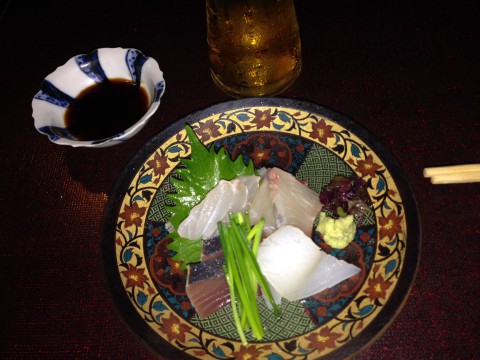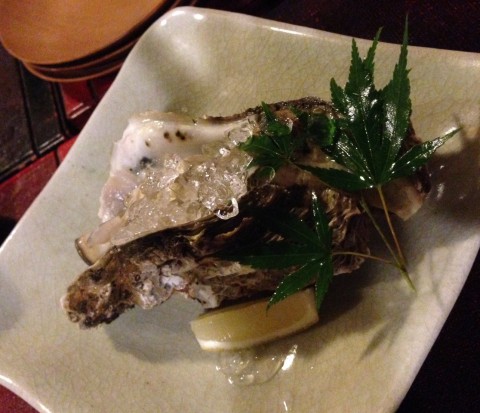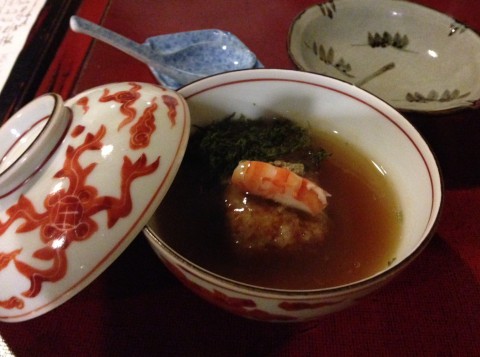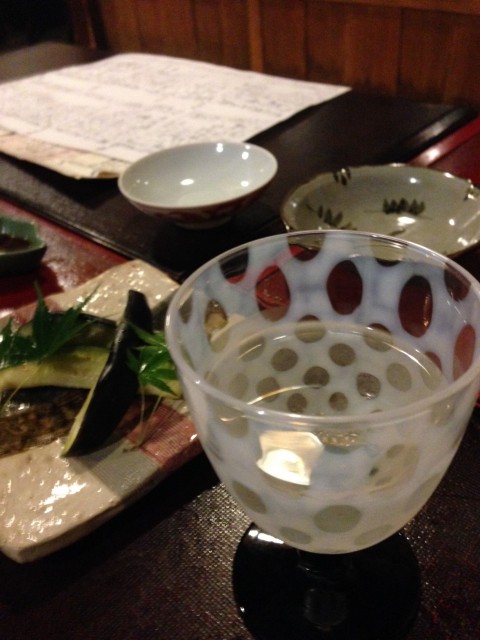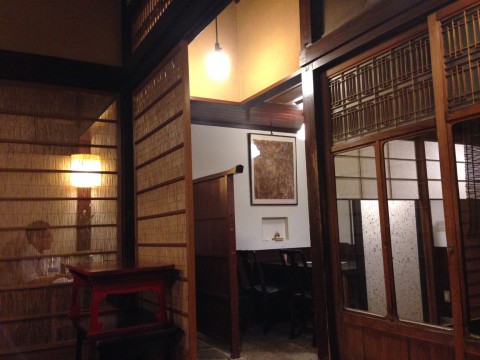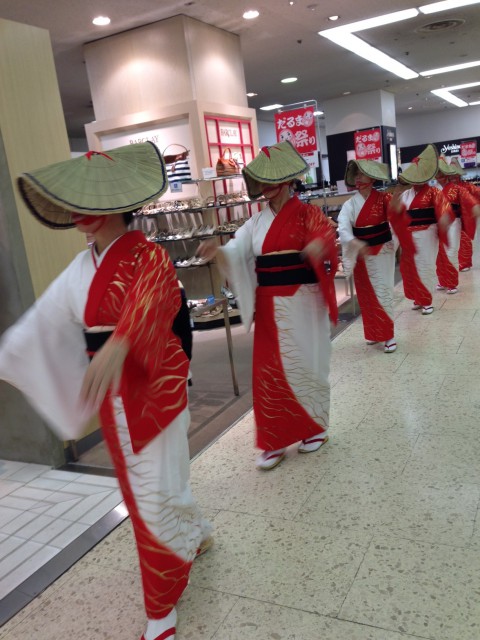Japanese Summer Festival Part-1
2016.08.31
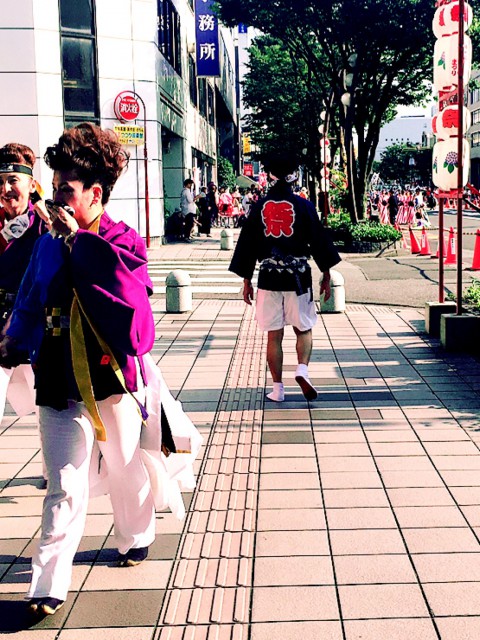
There was a festival conducted in the center of Fukui City.
While I was working, I heard some cheerful voice and music from outside the window at the office. The voice and music sounded so exciting and it was full of energy, and it made me smile.
In the morning of the festival, I could tell that it would be an extremely hot day because even it was only 9 or 10 in the morning, the sunshine was already strong. There were many people out working on closing the streets for events of the festival and setting up the stages for these events.
And in the afternoon, many visitors started coming out for the festival. Some of them were on line buying drinks and/or foods in front of hotels, restaurants and/or food stands which created festive atmosphere.
Moreover, I started seeing many people with “Yukata (informal cotton Kimono)” or colorful costumes walking around the city. Also police cars were parked and many police officers were standing on several corners of the city.
This is such an unusual scene for the city.
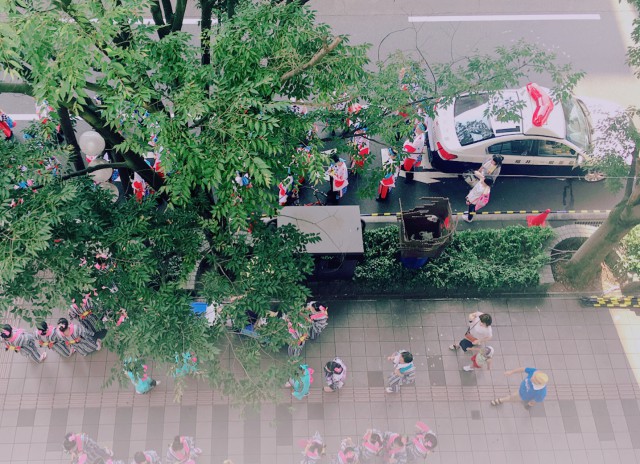
Some people, especially visitors from overseas might have thought that something must have happened.
Actually, there was “Yosakoi” dance festival which was about to be started soon.
Stay tuned for more about Yosakoi!
T.F


